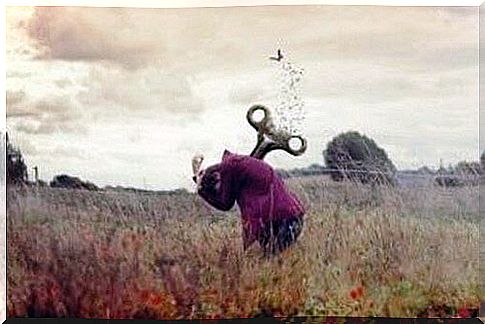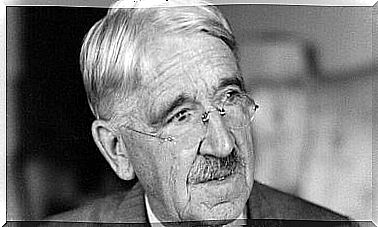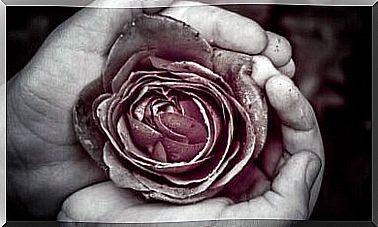Emotional Anguish: The Indefinable Fear That Paralyzes

Emotional anguish is like a whirlwind that grabs us, imprisons us and fills us with fear, anxiety, restlessness and an indefinable sadness. It is a kaleidoscope of adverse emotions that not only cause mental illness, but also effects on physical health that can become limiting.
Byung-Chul Han, a well-known South Korean philosopher and lecturer in cultural studies, defines today’s world as the society of weariness. Anxiety and emotional distress proliferate among us . For Dr. Han, the cause of everything lies in the culture of performance, in that virus that we have been inculcated since childhood and according to which everything must be oriented towards success on every level of our existence.
In addition to the pressure of the world around us that pushes us to step forward and succeed, we are introduced to the culture of multitasking from an early age. You have to do several things at a time and in a short time . It is the law of the jungle where not everyone survives or integrates completely, where it is easy to get trapped in the angst , a German term that evokes all that is oppressive, narrow and causes suffering. Let’s discover emotional distress together.
Emotional Distress: What’s Happening to Me?

When we talk about emotional anxiety, a question naturally arises: is anxiety equal to anxiety? Or are they two different psychological conditions? It should be emphasized that the term anguish has always been used above all on a philosophical level, thus differentiating it from the clinical one. Søren Kierkegaard, for example, defined anguish as the fear we sometimes experience when we realize that our future is limited and that the quality of our life depends on our choices.
Sigmund Freud, for his part, differentiated between “real anxiety” and “neurotic anxiety”, in which the latter was a pathological condition, far from any purely psychological reflection. What can be deduced from this is that anxiety is actually divided into an existential type and another that can be a symptom of various psychological disorders – as stated in the Diagnostic and Statistical Manual of Mental Disorders (DSM-V) .
Let’s see some features together:
- Emotional distress paralyzes us. If on the one hand anxiety makes us more active and nervous, on the other hand anxiety causes a block against uncertainty, towards what we cannot control or predict.
- When this shadow arises, worry intensifies, becomes obsession, catastrophic thoughts and despair arise.
- Taking an exam, having to make a decision, waiting for an answer or an event, or even having to face something we don’t think we are ready for generates anguish.
- Some studies indicate that some people are more prone to experiencing distress. The reason? Our neurochemical universe orchestrated by hormones and neurotransmitters. An increase in adrenaline or a reduction in γ-aminobutyric acid (GABA) would make us more or less favorable to experiencing states of distress.
- Emotional distress relies on numerous physical symptoms such as nausea, digestive problems, chest pressure, fatigue, muscle tension.

How can emotional distress be treated?
Poets, writers and painters channeled their anguish through art. Most of them actually experienced existential distress. It is a recurring sensation in the human being, inevitable when we look at the incomprehensible emptiness that surrounds us, inside us and in our future. However, it is precisely when that feeling, that emotion blocks us and renders us defenseless, that we must act.
Quoting Byung-Chul Han once again, we must remember that we are forced to live with uncertainty. This is the detonator of emotional distress. Those who believe that this condition can be resolved by taking psychiatric drugs (if not in extreme cases) are wrong. What you need to do is learn to manage the unexpected in life, to find new resources to control the uncontrollable.
There are many suggestions to do this, such as cognitive behavioral therapy, acceptance and commitment therapy, or mindfulness-based cognitive therapy (MBCT). All these techniques offer numerous benefits, helping us to reduce anxiety and to work on it, on negative thoughts, on adverse emotions that block us. This is the only way to get to the root of the problem and change our view of what is happening. We will learn to feel more capable and responsible for ourselves in an ever more complex, ever more demanding world.








